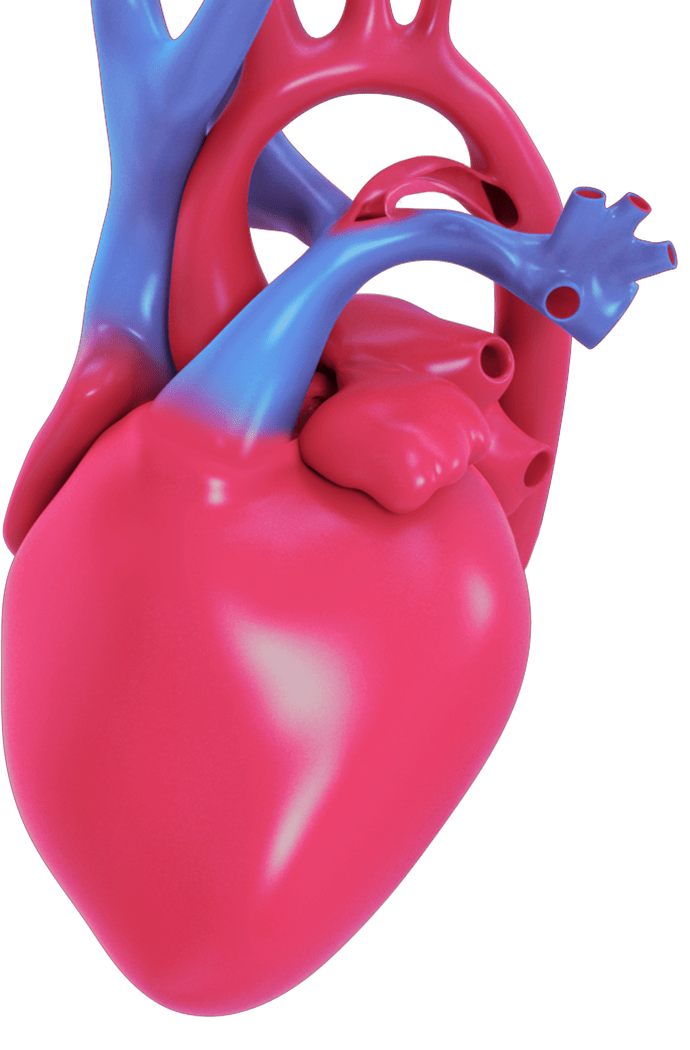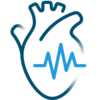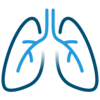PATENT DUCTUS ARTERIOSUS (PDA)
WHAT IS A
PATENT DUCTUS ARTERIOSUS?
A patent ductus arteriosus (PDA) is a blood vessel connecting the aorta with the pulmonary artery. This channel is important prior to birth to allow oxygen-rich blood from the mother to circulate throughout the fetus’s body.
Normally, the vessel closes shortly after birth. If it does not close, oxygen-rich blood can mix with oxygen-poor blood, creating extra work for the heart.

A PDA IS PRESENT IN APPROXIMATELY 1 IN 2,000 BIRTHS AND IS SIGNIFICANTLY HIGHER IN PRETERM BABIES1

PDAS ACCOUNT FOR APPROXIMATELY 5%-10% OF ALL CONGENITAL HEART DISEASES2

THE FEMALE-TO-MALE RATIO OF PATIENTS WITH PDA IS 2:12
HOW PDA AFFECTS YOUR
BLOOD FLOW
The heart is a pump with four chambers: two small upper chambers called the atria (you have a right and a left atrium) and two larger, more powerful pumping chambers called ventricles (again, you have a right and a left ventricle). A healthy heart pumps blood through the body and is controlled by a unique electrical system embedded within the heart itself. Typically, oxygen-poor blood flows from the body into the heart through the right atrium and then fills the right ventricle. When the heart beats, this blood is pumped through the pulmonary artery out to the lungs to be filtered and receive oxygen. From the lungs, the now oxygen-rich blood enters the heart through the left atrium. It then fills the left ventricle and is pumped through the aorta out to the body to provide oxygen to all the organs and cells. After it circulates throughout the body, it becomes oxygen-poor and returns to the heart.
During fetal development, the heart has two openings that normally close shortly after birth. These openings allow the oxygen-rich blood from the mother to bypass the lungs and flow directly through the fetus’s body. The first opening, called the foramen ovale, is between the left and right atria. The second opening, called the ductus arteriosus, is a channel or pathway connecting the aorta with the pulmonary artery. If these do not close after birth, they are known as patent, or open. If a patent ductus arteriosus is present, additional oxygen-rich blood can pass through the opening and mix with oxygen-poor blood. This causes the heart to overwork.

PATENT DUCTUS ARTERIOSUS
SYMPTOMS
Severity of patent ductus arteriosus symptoms often depends on the size of the PDA. Small PDAs may cause no symptoms and are sometimes only detected by the doctor hearing a heart murmur through a stethoscope. Medium to large PDAs may cause fatigue, poor growth and eventually lead to heart failure.2,3 All sizes of PDAs may increase a patient’s risk for a bacterial infection. Symptoms of patent ductus arteriosus may include:

HEART
MURMUR

DIFFICULTY BREATHING

FAST OR HEAVY BREATHING

POOR FEEDING AND POOR WEIGHT GAIN (INFANTS)

SWEATING WHEN EATING OR CRYING (INFANTS)
PATENT DUCTUS ARTERIOSUS TREATMENT
If you or a loved one has been diagnosed with a patent ductus arteriosus (PDA), it’s important to seek timely treatment since the condition can cause serious complications. Your doctor will discuss the best treatment option for you.
MAT-2304816 v3.0 | Item approved for U.S. use only.